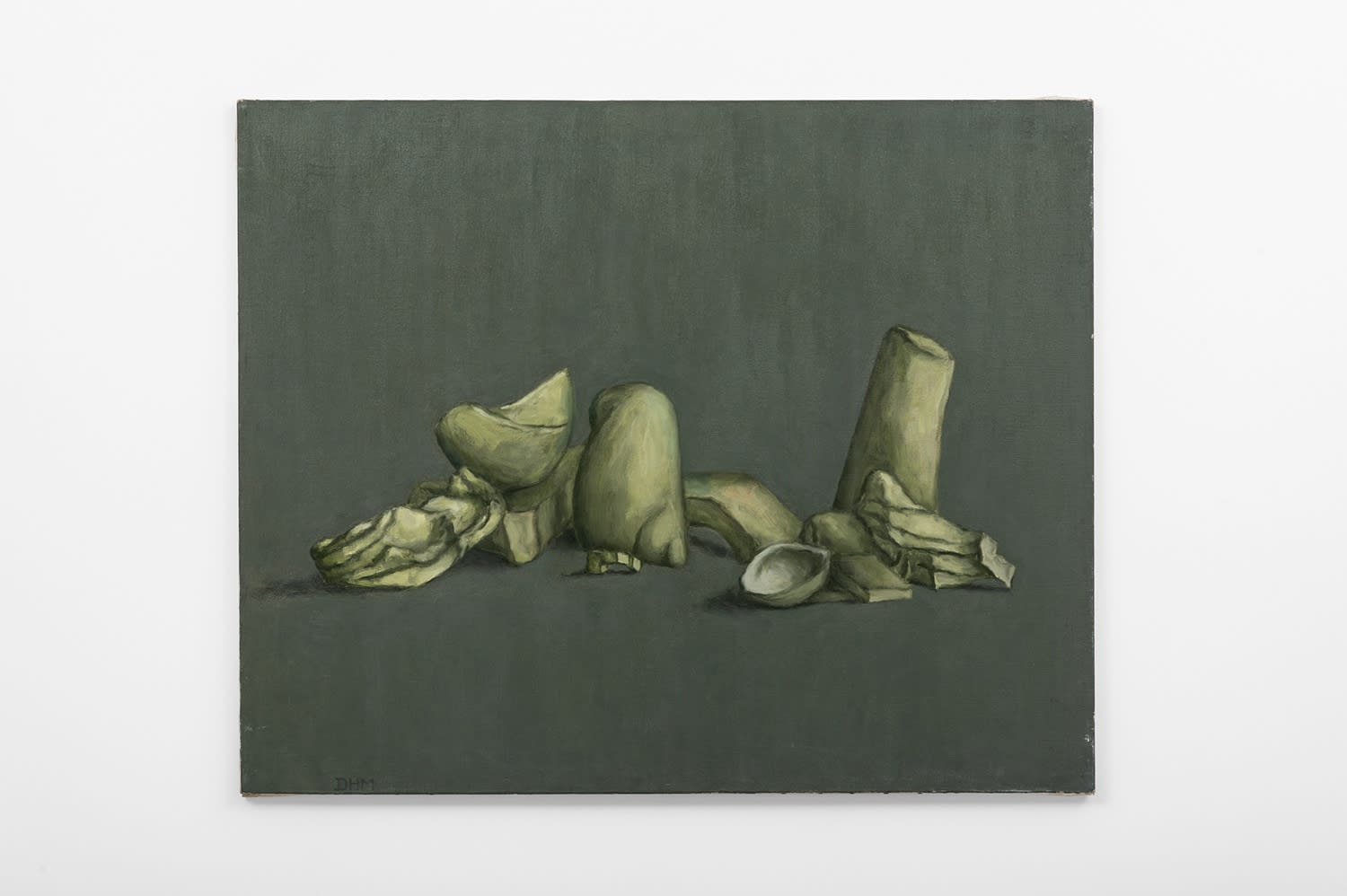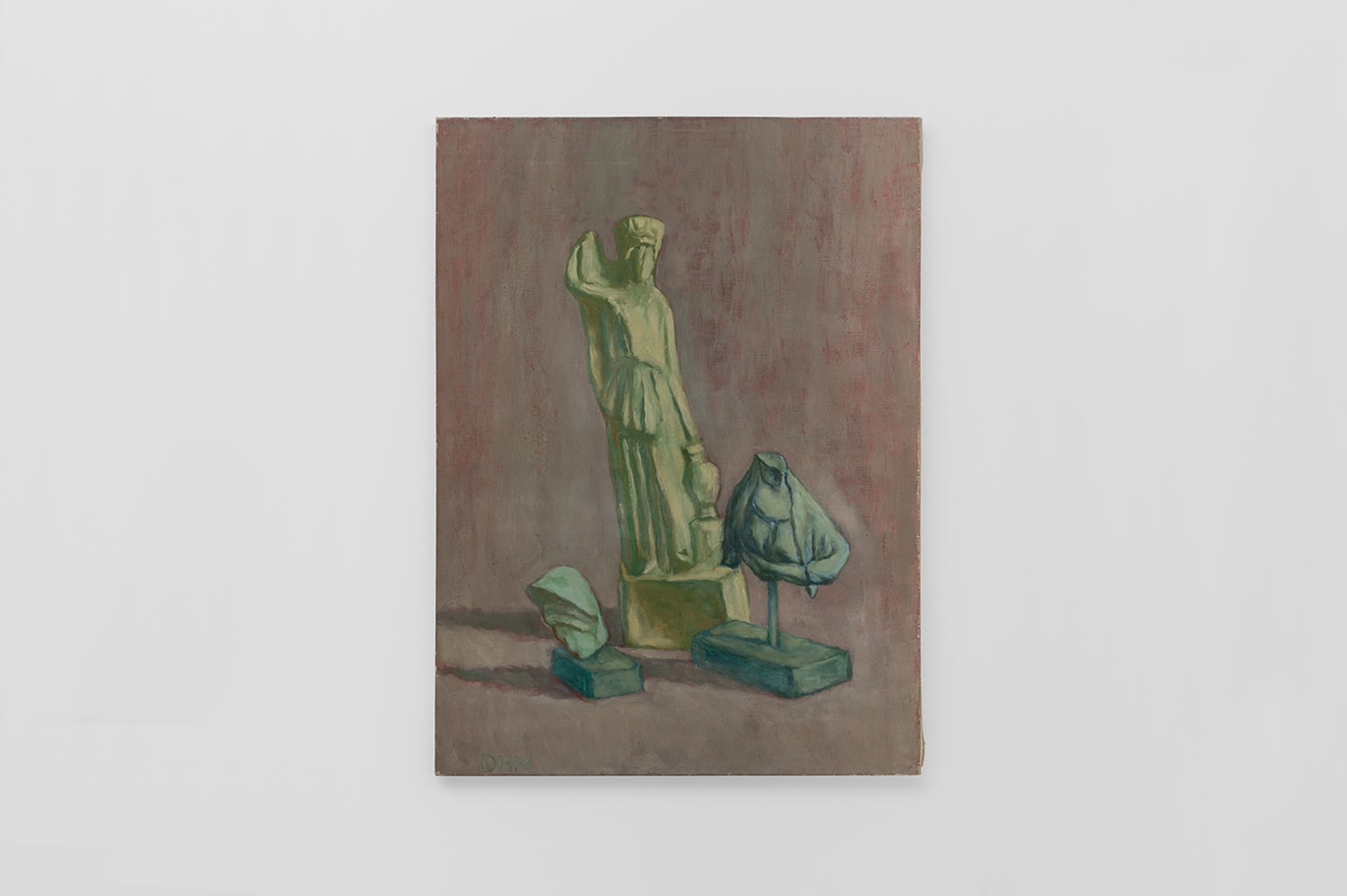
“If you call me an artist, what do we call Titian?”
Doubting her own legitimacy well into her ninth decade, Deborah Hanson-Murphy (1931-2018) was a painter. And though such a label might have irritated her, she was modern. Suspicious of current trends, anything that was considered fashionable, among her small group of friends, she was unafraid to criticize nearly every major artist of the 20th century. Except maybe Marc Rothko. “Au moins ça vibre,” she’d say. “At least it vibrates.”
When her strong American accent with which she delivered her impeccable French invariably gave her away, she’d explain: “I come from a cultural desert.” It was an identity she’d hang onto. Always different. Always a foreigner. Though she lived in Paris nearly five decades, first Rive Gauche, then Rive Droite, finishing her days in a Haussmannian flat in Montmartre, she never sought French citizenship. She would “not play a role” or “try to pass as someone else other than a foreigner.”

Variation 147, 1978-1981. Oil on canvas, 81 x 100 cm
Born in the small inland city of Stockton, California at the dawn of the Great Depression, Hanson- Murphy grew up not far from some the largest agricultural strikes the country has ever seen. Her father, was a respected, pioneering obstetrician, who as child had fled, like her maternal grandparents, the pogroms of Eastern Europe. But this man, whom she adored, passed away suddenly when Hanson- Murphy was still a young woman. Just a few years prior, when she had slipped up, fallen behind on schoolwork, as teenagers are wont to do, he had said to her: “You are my biggest disappointment.” Like a stone, she carried his lament with her until her last days. If anything, her father’s words had honed what her few friends remember as a “hyper-developed sense of critique.”
Hanson-Murphy’s relationship with her mother did not fill the void her father left. While some say she’d collected the seashells, which figure predominantly in the Variations the artist began in the early 1970s, on her walks with her mother along Northern California’s Moonstone Beach, others can only remember the resentment the artist harbored for a woman she found distant and uninterested.

Variation 359, 1993-1995. Oil on canvas, 65 x 81 cm
Though no one can remember precisely how or when, Hanson-Murphy learned French. And she learned how to paint. Two languages that would help her escape her hometown and her mother tongue. Shortly after graduating from Stanford, she and a girlfriend made their first trip to Europe, onboard what very well might have been the SS Ile de France. The pair were stars of the transatlantic voyage. Once in Paris, Hanson-Murphy participated in Jacques Ernotte’s Etude du dessin.
Her drawing studies continued back in New York City the following year, where she studied at the Art Students League with Bernard Klonis and later Will Barnet. There were brief stints at Mademoiselle and at Time, where the artist likely met her husband, the late Richard Winslow Murphy, the magazine’s music editor. Heir to a large estate on Martha’s Vineyard, which the couple would gradually sell to fund their life abroad, he struggled with alcoholism and mental illness. He, too, was ready to run. Married by a Justice of the Peace in Westchester County, Murphy left his job, and the couple departed for travels in India, Africa, and the Mediterranean basin.
In Italy, Murphy began writing a book on Paul Cezanne. The couple settled for a happy year in Ravello and ultimately chose Paris. It’s hard not to wonder what resonance her husband’s subject, the solitary, uncompromising, groundbreaking artist, whose work was mocked even after his death, might have had on Hanson-Murphy’s own practice. Existing folios of her drawings from this time reveal an active attention to the landscape and produce of her newly adopted home.

Variation 203, 1981-1983. Oil on canvas, 73 x 92 cm
Theirs was a frugal, intellectual lifestyle. “Perfectly atheist,” her friends remember. “If she had any religion, it was nature.” The couple made a deliberate choice not to have children. “When she wasn’t painting, she was walking. That’s why she loved Paris.” Emily Dickinson’s poems were constant companions, as were passages of Dante, Montaigne and Proust, which she proudly read in their original languages. Mélomane, Hanson-Murphy’s erudition also extended to music. Emerging as a written form in the 16th century, the Variation genre was made famous in Bach’s Goldberg Variations, and later by Mozart and Beethoven, as well as one of Hanson-Murphy’s favorites, Franz Schubert. In their variations, these composers return again and again to a particular phrase, many times appropriated from another artist, as a way to reconsider it, as if in a different light. Likewise, through her repeated address of a precise selection of objects and color, Hanson-Murphy orchestrated a certain musicality with her Variations in oil on canvas.
“Does it hold? Does it work?” she would ask rare visitors to her top floor studio. It was a favorite exercise that became a sort of game. Raising one of her Variations canvases and turning it 90 degrees at a time, she’d disorient the thing until it no longer was what it had been when it started. Like she’d done with her own life, she was lifting her paintings from their place of origin and expatriating them, if you will. But few saw her playfulness, or understood it. And though there were a handful of exhibitions in municipal galleries and a few sales through small Parisian dealers, when Hanson-Murphy passed away, her work was essentially unknown.

Variation 85, 1976. Oil on canvas, 81 x 60 cm
As my research on the artist progressed this spring, a friend she’d made in the final, exhausted years of her life, found her typewritten artist’s statement on the Variations. Emerging from the “concrete” and “objects on hand … the objects originally entered my work as an aspect of an interior,” she wrote in 1982. “Over the course of several years, the interiors gave way, little by little, to one element in them, the mantelpiece with its display of objects (principally pieces of antiquity from Greece and Egypt) and a bouquet of flowers. In time the mantelpiece yielded to the objects. … I have referred (sic) to them as variations, all of them being related and yet each being different.”
For Hanson-Murphy, her Variations contain two themes: those that contain objects from antiquity, and those peopled with shells. Then of course there are the canvases in which the two worlds meet. Already in the early 80s, the artist saw her work evolving, with objects becoming “unidentifiable” and “subordinate to space.” Ultimately, she reflected, the work is about relationships between form and space. Quoting Miguel de Cervantes’s Don Quixote, she releases her compositions to the viewer, and the freedom of the imagined. “This that appears to you as a barber’s basin is for me Mambrino’s helmet, and something else again for another person.” In an accented French or an English reshaped by a lifetime abroad, her paintings whisper still: “Does it hold?”
Unless otherwise noted, all quotes from author’s interviews with artist’s friends and family April-June 2023.

